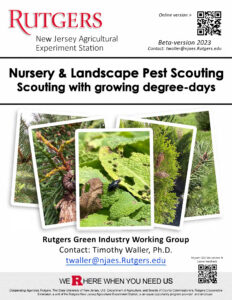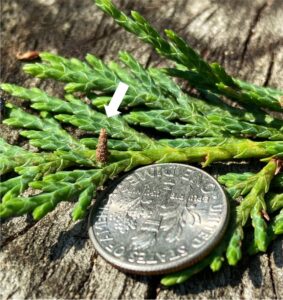Nursery Round Tables – I am hosting these free events at the Cumberland RCE (291 Morton Ave, Millville NJ)
- Like the idea of using growing degree-days, but are unsure how to use the online calculators or other resources – THIS IS FOR YOU. On Monday 2/10 – we will be using laptop computers (I have 12 on-site), tablets, and smart cellphones to access and explore online growing degree-day calculators. We will then use the Rutgers Pest Scouting Guides to line up when to expect these pests and will discuss treatment opportunities with overlapping pest populations.
-Each person will use all three technology methods to obtain their local growing degree-days. – By the end of the training you will be able to access and utilize this powerful tool anywhere.
____________________________________________________
ALL DELAWARE NOW QUARANTINED (DA-2024-47)(as of 12/4/24)
Subject: APHIS Establishes Box Tree Moth (Cydalima perspectalis) Quarantines in Delaware and Pennsylvania
To: State, Tribal, and Territory Agricultural Regulatory Officials
Effective immediately, the Animal and Plant Health Inspection Service (APHIS), in cooperation with the Delaware Department of Agriculture and the Pennsylvania Department of Agriculture (PDA), is adding the entire State of Delaware and Erie County, Pennsylvania to the box tree moth (BTM; Cydalima perspectalis) quarantined area. APHIS is taking this action in response to the confirmed detections of BTM in a residence in Little Creek, Delaware, on July 11 and in Lakeside Cemetery in Erie, Erie County, Pennsylvania, on August 29. PDA has established an intrastate quarantine area for BTM that parallels the Federal quarantine. This Federal Order supersedes Federal Order DA-2024-17.
The attached Federal Order (click here) and additional information about BTM are located on the APHIS box tree moth webpage. For additional information, you may contact:
Matthew Travis
National Policy Manager
580-240-5394
matthew.a.travis@usda.gov
If you see, or think you see this pest, or its damages in New Jersey please contact:
- RCE -Cumberland Co. Nursery Agent: Tim Waller – twaller@njaes.rutgers.edu
- Nursery Inspection Program Manager: Sarah Katzenbach – sarah.katzenbach@ag.nj.gov (609) 406-6939
Please educate yourself about this in-bound pest here – Resources:
- Video: Click here for- “Demystifying Box Tree Moth” – HRI
- Factsheet: Box Tree Moth: Fact Sheet, Management & Visual Guide
- OSU Guide: What to look for with Box Tree (Boxwood) Moth
- USDA-APHIS Box Tree Moth : APHIS BTM Landing page
- [Draft] Compliance agreement: National Plant Board – Box Tree Moth



